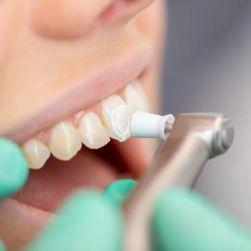Tooth decay is one of the most common chronic diseases in children across the United States. It's a concern for many parents who strive to ensure their kids maintain healthy smiles. But how can you, as a parent, tell if your child is developing tooth decay or cavities? Early detection and intervention are crucial to prevent further dental issues and promote long-term oral health. In this article, we'll explore specific signs and symptoms to look out for, and what steps you can take to protect your child's dental health.
Recognizing the Early Signs of Tooth Decay
The first step in identifying tooth decay in children involves being attentive to subtle changes in their behavior and oral health. Often, early signs include sensitivity to sweets and cold beverages. Your child might express discomfort when brushing or eating certain foods. Pay attention to complaints of pain, as they can indicate the beginning stages of a cavity. Additionally, white spots on the teeth can be an early sign, suggesting that demineralization is occurring.
Visible Symptoms: What to Look Out For
As tooth decay progresses, visible symptoms may appear. Parents should regularly check their child's teeth for any brown or black spots, which are common indicators of cavities. These discolorations, often found on the grooves of the teeth, suggest that decay has advanced to the point where professional intervention may be necessary. If you notice any holes or pits in your child's teeth, it's essential to schedule a dental appointment immediately, as these are signs of significant decay.
The Role of Oral Hygiene Habits
Ensuring your child maintains proper oral hygiene is crucial in preventing tooth decay. Brushing twice a day with fluoride toothpaste and flossing regularly can help remove plaque that leads to cavities. As a preventive measure, educate your child about the importance of good oral hygiene practices. Monitor their brushing to ensure they're doing it correctly and thoroughly. Sometimes, parents overlook the need for supervision in young children, assuming they have mastered these skills.
Regular Dental Check-Ups are Key
Another critical component in preventing and detecting tooth decay is regular dental check-ups. Pediatric dentists recommend that children visit the dentist every six months. These visits allow professionals to monitor dental health and catch any issues early on. Dentists can provide treatments, such as sealants or fluoride applications, which are effective in protecting teeth from decay. Additionally, they can offer personalized advice on maintaining oral health tailored to your child's specific needs.
When to Seek Professional Help
If you suspect that your child might have a cavity, it's important to seek professional help as soon as possible. Dentists can diagnose the extent of decay and recommend appropriate treatments, which may include fillings or more extensive procedures, depending on the severity. Early treatment not only resolves the issue but also prevents further complications, such as infection or tooth loss.
In conclusion, being proactive about your child's oral health can significantly reduce the risk of tooth decay and cavities. By recognizing early signs, maintaining good oral hygiene, and scheduling regular dental visits, you can ensure that your child's smile remains healthy and bright. If you haven't done so yet, consider visiting Dentistry Toothtruth for more comprehensive resources and expert advice on children's oral health. Remember, early intervention is the key to prevention, and your child's dental health is paramount.






